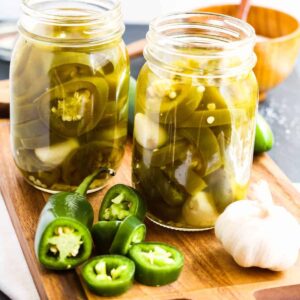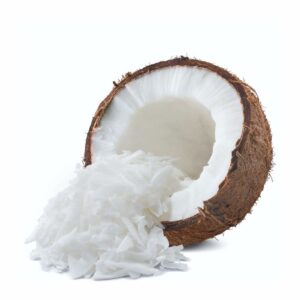Coconut is the fruit of a tropical palm plant. It has a hard shell, edible white flesh, and clear liquid, sometimes referred to as “water,” which is often used as a beverage. Coconut flesh or “meat” is aromatic, chewy in texture, and rich in taste.
The coconut palm is species of a palm tree, Cocos nucifera, that grows to about 30 meters tall and is extensively cultivated in tropical climates. It is one of about 2,600 species in the palm family Arecaceae and it is the only extant species in the genus Cocos.
The term coconut refers to the fruit of the coconut palm, which consists of a fibrous husk (mesocarp) encasing a large seed or inner stone. The term coconut also is used to refer to the entire large seed with its covering of hard, green, fibrous endocarp, or to the edible, commercially important, white and fleshy part of the seed (the coconut “meat” or endosperm), which in turn surrounds the hollow, fluid-filled, central cavity. The hollow center is generously filled with a clouded yet translucent, flavored liquid (liquid endosperm) slightly thicker in consistency than water.
While the origins of the coconut are subject to controversy, including areas of South Asia, northwestern South America, New Zealand, and India, it has spread generously across the tropics, thriving on sandy soils.
The coconut palm today is grown throughout the tropical world, for decoration as well as for its many culinary and non-culinary uses. Virtually every part of the coconut palm has some human use. For example, the white, fleshy part of the seed provides food; the coconut water provides a nutritious drink; the fiber left over from coconut milk production is used as livestock feed; the apical buds are edible (“heart-of-palm”); and the nectar is used to make a drink. Furthermore, the fiber from the husks is used to make ropes, brushes, and other items; the leaves are used for baskets and roofing thatch; the palmwood is used for furniture and construction; the trunk is used to make drums, containers, and small canoes; and the roots provide a dye and medicine; among many other uses.
The Fruit
Botanically, a coconut is a simple dry nut known as a fibrous drupe. The husk, or mesocarp, is composed of fibers called coir and there is an inner stone. The hard endocarp of the stone, the outside of the coconut as sold in the shops of non-tropical countries, has three germination pores (or stoma) that are clearly visible on the outside surface once the husk is removed. It is through one of these that the radicle emerges when the embryo germinates. Adhering to the inside wall of the endocarp is the testa, with a thick albuminous endosperm (the coconut “meat”), the white and fleshy edible part of the seed. When the coconut is still green, the endosperm inside is thin and tender, often eaten as a snack. But the main reason to pick the nut at this stage is to drink its water; a big nut contains up to one liter. The meat in a young coconut is softer and more like gelatin than a mature coconut, so much so, that it is sometimes known as coconut jelly. When the nut has ripened and the outer husk has turned brown, a few months later, it will fall from the palm of its own accord. At that time the endosperm has thickened and hardened, while the coconut water has become somewhat bitter.





